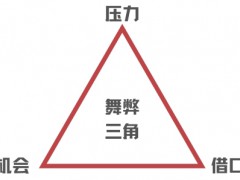据2月18日Investing.com报道,一年前,新冠肺炎疫情在全球爆发,至今全球石油需求形势仍不明朗。然而,人们现在对石油市场的某些方面有了更清晰的了解。目前,至关重要的是,要打破冬季严寒天气对德克萨斯地区石油生产和炼油的影响,关注欧佩克+在两周后的会议上可能会做的决策,美国油价上涨的原因和未来的石油需求。
一是,美国石油供应暂时中断。
德克萨斯州的低温导致本周美国原油产量大幅下降。根据最新的信息,超过400万桶/天的石油产能被迫中断,约占美国石油总产能的40%。要知道,在正常情况下德州通常的石油产能为460万桶/天。
相比之下,去年10月,为应对Delta飓风,生产商关闭了墨西哥湾约92%的原油产量,即168万桶/天。近期气温应该会好转,产能中断可能会持续到下周,但如果需要进行大规模维修,部分产能可能会暂停更长时间。
由于类似的气候原因,墨西哥湾地区的大部分炼油产能也处于停产状态。本周初,随着有消息称大规模停产可能将来临,油价上涨,西德克萨斯中质油价格最终突破每桶60美元大关。
价格周三又上涨了1%,因为更多关于中断的信息变得清晰起来,不过随着勘探和炼油作业的恢复,价格涨幅将有所回落。由于炼油厂停产,美国的汽油价格也在上涨。例如,周三美国中西部的汽油价格每加仑上涨了约0.05美元。
二是,欧佩克+对减产协议的决定。
欧佩克+成员国正准备在两周内举行会议,并已经开始向媒体表明他们的立场。据《华尔街日报》报道,目前,沙特阿拉伯的石油日产量将额外减产100万桶,这一政策将持续到3月底。
沙特阿拉伯将在4月份恢复其供应配额。这是沙特阿拉伯在1月份宣布“额外减产”时的立场,因此这一信息证实沙特阿拉伯的政策在过去几周没有改变。
另一方面,欧佩克+授权俄罗斯在2月和3月增加产量,但由于异常寒冷的天气,俄罗斯一直无法增加产量。俄罗斯2月份的平均产量为1011.5万桶/天,比1月份减少了约4.4万桶/天。不过,3月份气温升高可能会增加俄罗斯的石油产量。
在3月4日的会议上,欧佩克+将决定是否在4月份继续以目前的水平生产石油(沙特阿拉伯额外减产100万桶/天),或者由于油价的升高,决定提高产量。俄罗斯表示,它相信石油市场是平衡的,而沙特阿拉伯则对市场的现状表达了更为谨慎和温和的乐观态度。
三是,美国燃油价格上涨。
过去一个月,每加仑汽油的平均价格上涨了近0.20美元,令人担心美国的汽油消费价格会回到此前的高油价水平。汽油价格的上涨,可能与该国早期关于石油和天然气租赁及石油运输的行政命令所引发的市场紧张情绪有关。
然而,这些行政命令尚未影响到基本面。价格上涨在很大程度上是由于与这些政策无关的基本面因素的收紧。
四是,石油需求仍不明朗。
美国和欧洲的短期石油需求仍然是个大问题。除非允许人们自由走动,让孩子们重返学校,让更多的工人重返办公室,否则汽油消费量不可能恢复到以前的水平。
许多欧洲国家已将封锁令延长至3月或4月,不过在一些国家,立法机构或法院正在推翻行政当局的决策。在美国,情况也不明朗。美国许多学区还没有恢复全日制在校课程,因此许多家长无法离开家重返工作岗位。人们希望秋季全日制教育将恢复,但就当前情况来看,这很难实现。
长期来看,欧洲和亚洲以外地区的石油需求预计将增长。交易者不应该忘记,即使短期需求情况是存疑的,但长期需求形势是可以确定的。
王佳晶 摘译自 Investing.com
原文如下:
4 Things To Know Now about The Future Of Oil Demand
It's coming up on a year since the coronavirus pandemic exploded across the world and global lockdowns expanded beyond China to almost all of the rest of the world. The global oil demand situation remains uncertain.
However, some aspects of the oil market are now better understood. Currently, it's crucial to break down what the winter freeze is doing to Texas-area oil production and refining; what OPEC+ is likely to do when it meets in two weeks; why U.S. fuel prices are up; and what, if anything, we can glean right now about the future of oil demand:
1. Temporary Disruptions in U.S. Oil Supply
Frigid temperatures in Texas have caused a significant drop in crude oil production in the United States this week. According to the latest information, more than 4 million bpd of oil (out of the 4.6 million bpd Texas typically produces) is now offline. That represents about 40% of total U.S. oil production.
For comparison, this past October, producers shut about 92% of crude oil production in the Gulf of Mexico in preparation for Hurricane Delta, which amounted to 1.68 million bpd. Temperatures are supposed to improve through the weekend. The disruption may last until next week, but some production could be offline longer if significant repairs are needed.
Most of the refining capacity in the Gulf of Mexico region is also offline for similar reasons. The refining disruption likely amounts to about 4 million bpd. Oil prices rose at the beginning of the week on news that such shutdowns might be coming, and WTI finally topped the $60 per barrel mark.
Prices rose another 1% on Wednesday, as more details about the disruptions became clear, though traders should be prepared for some retreat from these price gains as production and refining return. Gasoline prices are also rising in the United States as a result of the refinery outages. For example, prices increased about $0.05 per gallon in the Midwest on Wednesday.
2. OPEC+ to Meet on March 4
OPEC+ members are preparing to meet in two weeks and have already started presenting their positions to the media. Currently, Saudi Arabia is holding back an extra 1 million bpd of production, but, according to reporting from the Wall Street Journal, it intends to continue this policy only through the end of March.
Saudi Arabia will resume pumping at its quota in April. This was Saudi Arabia’s position when it announced the “surprise cuts” back in January, so this information confirms that Saudi Arabia’s policy hasn’t changed in the last few weeks.
Russia, on the other hand, was authorized by OPEC+ to increase production in February and March, but it hasn’t been able to pump more barrels due to abnormally cold weather. Russia’s production has actually averaged 10.115 million bpd in February, about 44,000 bpd less than January. It is possible that warmer temperatures in March may bring an increase in Russia’s oil production.
When it meets on Mar. 4, OPEC+ will decide whether to continue pumping at current levels in April (with an additional 1 million bpd from Saudi Arabia returning) or it could decide to increase production rates since prices are higher. Russia indicated this week that it believes the oil market is balanced, while Saudi Arabia expressed more cautious and tempered optimism about the current state of the market.
3. Higher Fuel Prices in the U.S.
The average price of a gallon of gasoline has increased nearly $0.20 in the past month, sparking concerns that U.S. consumers may see a return to the high gasoline prices that characterized the Obama administration. Some of the increase in oil prices, and therefore gasoline prices, can be tied to the sentiment created by the Biden administration’s early executive orders on oil and gas leasing and oil transportation.
However, these executive orders are not yet impacting the fundamentals. Rising prices are largely due to tightening fundamentals unconnected to these policies.
4. Oil Demand Questionable
Short-term oil demand in the U.S. and Europe is still a major question. Gasoline consumption cannot be expected to return to previous levels until free movement is allowed, children return to school and many more workers return to their offices.
Many European countries have extended their lockdown orders through March or April, though in some countries legislative bodies or courts are overruling the executive’s authority. In the United States, the situation is also unclear. Many school districts in the U.S. have not resumed full-time, in-school classes, so many parents are unable to return to work out of the home. Many forecasters seem to be counting on a resumption of full-time schooling in the autumn, but the political situation in America may make that impossible.
In the long-term, oil demand is expected to grow outside of Europe and Asia. (Last week, this column examined India’s potential growth). Traders should not forget that even if the short-term demand situation is questionable, the long-term demand situation is more certain.







